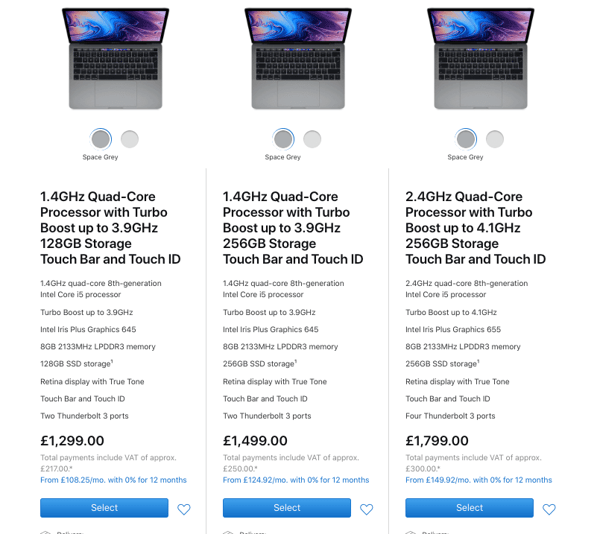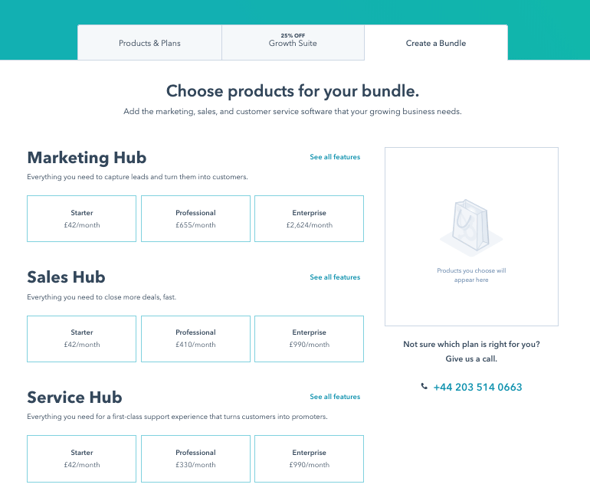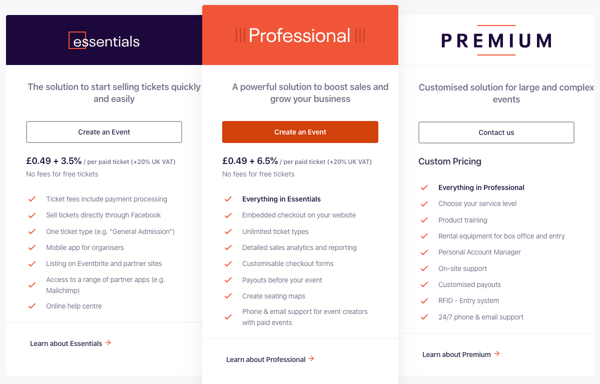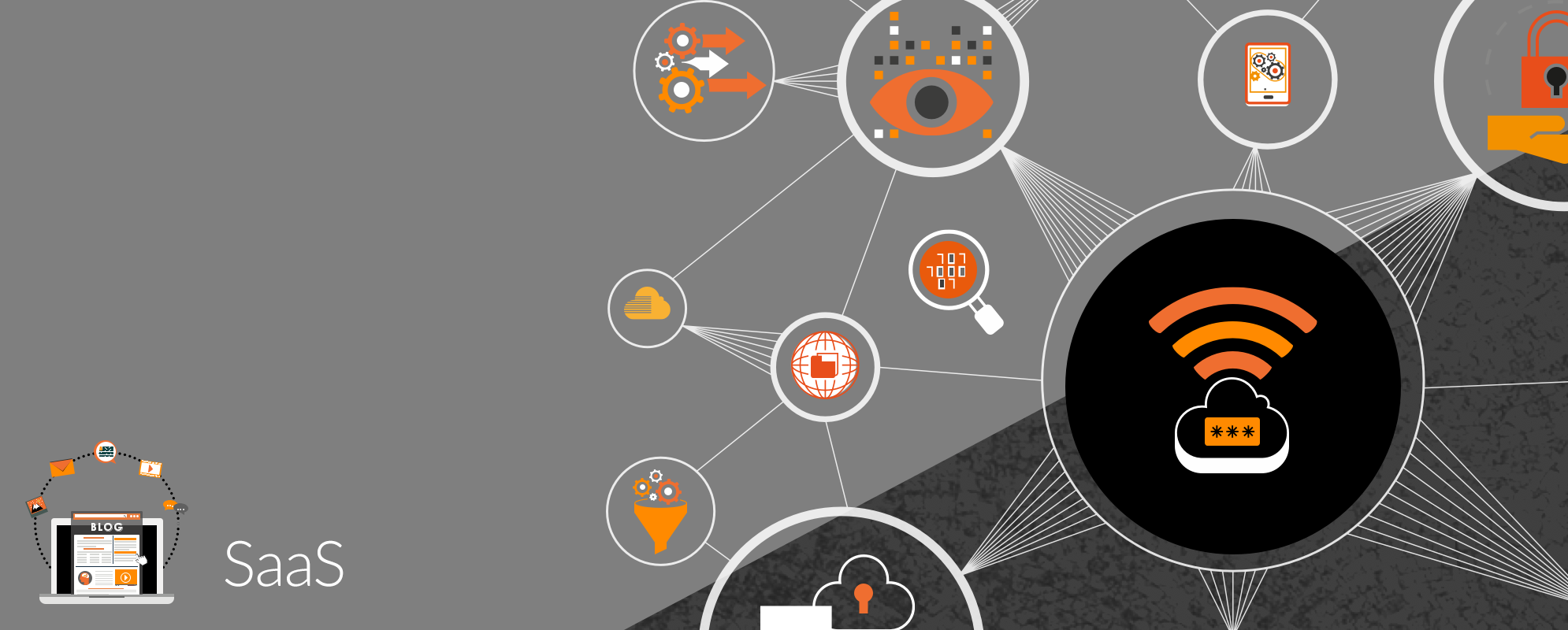When looking to grow a SaaS business, choosing the right pricing model is one of the biggest challenges.
As consumers become more accustomed to purchasing subscription-based software online, the traditional approach to pricing may not resonate as loudly. While we generally process information the same way we always have, there is a lot more of it out there. As a business, you should take a keen interest in the psychology of pricing and how you can make your price plans and the core messaging surrounding your options as effective as possible.
Let’s take a look at some popular pricing models and how they can be applied.
#1 Price anchoring
When you walk into a restaurant only expecting to spend £20 on a bottle of wine, but the fancy waiter suggests a £200 bottle, you might want to quickly examine the menu for options that won’t break the bank (or make your date think that you’re a penny pincher).
There are no £20 bottles of wine, but there are some delicious bottles for £50. That looks much better when compared to the initial price tag of £200.
That’s an example of price anchoring. The £200 price tag is used to influence your perception of what expensive or good value looks like. You’d planned on spending £20, but the most expensive wines on the menu have persuaded you that £50 is a reasonable price to pay.
You can apply this pricing tactic to your SaaS business by bringing the attention to your heftiest price tag (even if it’s not the big converter) because it will serve as the benchmark against which the customer compares your other prices. This is a fantastic way to upsell because if you start at your highest price point, you can peel back the numbers quite comfortably until you get to an amount which seems manageable to your customer. Descending in price as opposed to ascending is a powerful mental hack that makes the customer feel as though they are getting a better deal.
#2 Charm pricing
Number nine: Doctor’s Orders!
The magic of the number nine has not been lost on marketing teams (or bingo players).

For example, let’s take a look at Apple’s MacBook Pro pricing. Can you see a pattern? In reality, £1799 is basically £1800, but it seems like you’re a little bit farther from £2000 (ouch).
When planning your pricing strategy, consider taking the weight off the front by reducing the headline prices by £1 or 1p.
#3 Odd-even pricing
This one may appeal to the more mathematically inclined (in which case, not me), but the basic theory behind this pricing model is to reduce the price by a couple of units in order to bring it to the closest round number. A little bit like charm pricing, but without the 9.
According to one study, subjects were more likely to choose a menu item if it was odd priced. This pricing model is thought to work because it distracts the consumer from viewing the price relative to the next big round number.
For example, odd-even pricing will look a little like £47.83, £78 or £394.
This is a good SaaS pricing strategy to apply if your competitors are leaning into charm pricing, as it makes your pricing option stand out a little better.
#4 Product bundle pricing
Does your software serve a range of needs? Can all of these functions be used independently but also complement each other? If the answer is yes, then your SaaS products are primed for bundle pricing. Not all customers will need your entire suite (this is particularly true if you’re a B2B seller), so mixing and matching the different capabilities of your software to suit your buyer is a perfect way to ensure a sale and secure an upsell in the future. HubSpot does this exceptionally well by allowing clients to customise their own bundle according to the size and needs of the customer they are selling to. 
#5 Trial pricing
If you’ve ever jumped on the Hello Fresh, Graze or Gousto train, you’re likely to have experienced trial pricing. This is when your initial payment is heavily discounted so that you can try out the product, become accustomed to its greatness and feel much more comfortable about paying the full price after the introductory offer is over.
When a customer spends even a small amount of money with you, it also makes them far more likely to spend more money with you in the future—it overcomes that initial psychological hurdle.
With SaaS sales, you may have encountered the popular £1 trial pricing. Ultimately, this isn’t a pricing model that should be encouraged as it can yield mixed results. You run the risk of coming across as though you are trying to bait the customer because once you have their banking details, you can roll into a fully paid membership the following month, which may come as a nasty surprise to the customer if they didn’t engage with your product after the initial download.
It’s better to be transparent and offer a free trial or have a solid email nurture plan that notifies the customer when their trial period is ending and automatically cancels if they don’t voluntarily renew.
#6 Centre stage effect
This pricing model banks on our inclination to focus on the middle item when faced with three options. Effectively, this looks like you’re placing your most likely to sell package at the centre of the stage – and who doesn’t love the star of the show?
In order for this tactic to work, help your customer by visually highlighting the option and make it pop out from the rest. If we take a look at Eventbrite, they offer three pricing plans with the middle one clearly being targeted at their ideal buyer – small-to-medium organisations looking to use their online ticket selling services. This price plan makes it easy to determine which category you fall into and intuitively leads the customer to the “Professional” option by making it stand out from the other two.
Pricing tips
Your pricing page is crucial to your lead conversion success, and there are several best practices that you should be implementing in order to get the results you want. Here are a few quick tips to get you started:
- Tidy up your language: The pricing page is not the place for extensive vocabulary. Keep it clean and simple and remove anything that might convolute your message or confuse your customer.
- Less is more: Too many options will overwhelm your customer. Formulate a few packages and list those only. This will help to curtail analysis paralysis.
- Use visual aids: Highlight the plan that will appeal the most to your ideal buyer persona—you want to make the selection obvious to identify.
- Show social proof: Don’t be shy! Show off who your customers are and how they have benefited from your software. This provides reassurance and helps your prospective customers to make that final decision.
- The goal gradient effect: You’ve taken the customer to the checkout – woohoo! Don’t start complicating things now. If they’ve given you details like address and billing information, help them by prepopulating the fields and making the process as simple as possible.
The key takeaway from all of these different pricing models is that it has to be suited to your offering, and it’s necessary to make the options as clear and easy to understand as possible. This is increasingly important in a digital world where people are overburdened with information and stimulus. Your pricing strategy should focus on making the decision logical and intuitive.
To help you increase leads and conversion rates quicker, we’ve designed a cheat sheet that will help you to formulate an effective free trial marketing strategy. Just click here and get yours for free.
If you’d like some help optimising your pricing pages or you’d like to speak to a SaaS marketing expert about incorporating an inbound strategy into your digital marketing efforts, schedule an exploratory call with us today.
Stay Updated with Our Latest Insights
Get expert HubSpot tips and integration strategies delivered to your inbox.



